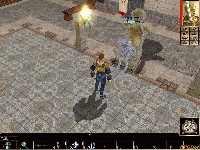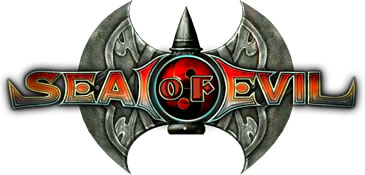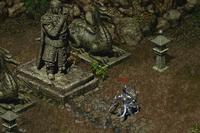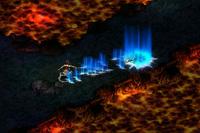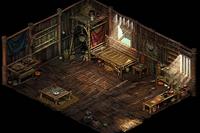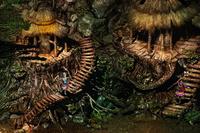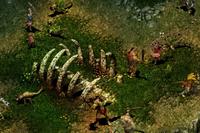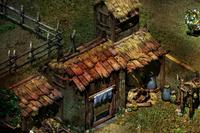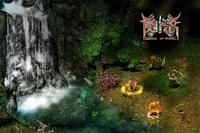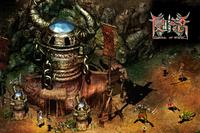|
|
|
Main News Forums Games Games Database Top 100 Release List Support Files Features Reviews Previews Interviews Editorials Diaries Misc Download Gallery Music Screenshots Videos Miscellaneous Staff Members Privacy Statement |
Seal of Evil: Review
What's the first thing you usually do when you open up a brand new game? Sit down and read the manual? Well with this game, you would be well advised to do so. While it doesn't tell you everything you need to know, and much is not clearly explained, most of the basic elemental concepts that are absolutely essential to succeed are outlined in some detail. At 139 pages, it does make for a good read. Fear not, the manual isn't the best thing about the game, but its obvious quality is an indication of things to come. This is a game you will either absolutely love for its internal complexities, or completely dislike for its many faults. It's definitely a 'horses for courses' game; and is certainly different from a standard DnD experience. If I had to describe it quickly, I would have to say it's a mix of Japanese console style as found in the Final Fantasy range; a serving of cross-platform games like Summoner; topped off with a twist of Dungeon Siege. This section from the games official website sets the stage:
The first point to make is that the game while quite long, is very linear. There is no character creation. Initially you control two characters, a teenage witch and an older Beastman. Soon three other characters, a young wizard, an assassin and a Paladin will join you. While only three can be involved in combat, all of them travel with you and appear all-together in each of the many cut scenes which help move the narrative forward. The story itself is quite simple, traverse the land to find 5 magic stones, which will help you defeat an evil ruler. Traditional fare, but there are twists along the way and a slew of both necessary and optional quests to complete which will not only garner your characters experience and levels, but will also open up new skills for them as well.
Two things to watch out for here. The game is very linear. Quests are for the most part local. Often, when you leave an area, you cannot return and any unfinished quests are lost and entered into your quest journal as failed. Save often, so when this happens to you, and it will, you can go back and finish any open quests. Some of these are very well constructed and many have multiple parts. One of my personal favourites involves the Peng family; each part of the quest only becomes available after completing the preceding section and they are all different. You'll solve murder mysteries, cure sickness, save children and help out young lovers as you pursue your own search. A handy journal keeps track of them all for you, so you should never forget what you have to do. As your characters grow in experience, their skills will improve and new ones will be added. Also, along the way, you will find scrolls, which not only teach new skills but also advance those skills. However, you have no control over the learning or development of those skills. In fact, you have very little control over most aspects of the characters' development. For me this is one of the major weaknesses of the game. Only being able to use three characters in combat is also very limiting. Your main character, the witch, with her offensive magic must be there. The wizard is necessary, not only for his healing spells, but also for his summoning skills. That leaves only one slot vacant for one of the three available fighters. If one character's HP goes to zero in battle, they cannot be replaced until the fight is over. This isn't a problem early on, but later in the game, you face swarms of seemingly never-ending, tough monsters. Sometimes all you can do is RUN! Combat was another disappointment to me, though I'm sure some will like it. To be fair, it has some good aspects. Most characters have several primary combat attacks or spells, which work by default once set, and at least an equal number of secondary attacks, or spells which are controlled by the right mouse button. Some are individual attacks, while others are designated ranged, or group. You choose the attack or spell and that's about it. You have to select a character and deliberately right click to use their secondary skill, such as casting a healing spell. For most of the battle, you are little more than a spectator. Each of the three characters you are using will carry out their default action without any input from you. Only when you want them to use their secondary attack or spell will you need to do anything. You can pause the game at any time to change a weapon or chosen attack, but that seems to be the limit of your involvement. This can become very tedious. Most areas re-spawn as soon as you leave and very soon you will grow tired of snakes, spiders, woodland animals and giant insects which all want to attack you. Enemy soldiers are a welcome relief. Linked to combat and spellcasting is the elemental system the game uses. The five elements of metal, wood, earth, water, and fire are all linked with each one either promoting or retarding another. This has tremendous implications for which attacks or weapons you choose when facing a monster. An obvious example would be a water based attack works better on a fire creature, than a wood based one. These five elements also carry over into one of the best aspects of the game; item creation. There's not just one system of item creation in this game, but four and each has different associated skill levels. They enable you to create everything from weapons, to armour, to jewellery. Each of these has special abilities that you can then unlock as well. Along your travels you will discover many elements, which can be combined, to create everything you need, including assorted potions. I've had a lot of fun creating items for each character and I've only just scratched the surface. Want a powerful fire wand that offers defence and doubles your attack skill while increasing your movement speed and Hit Points? No problem, just combine the correct easily found items and it's yours. Experiment at your leisure.
Graphically, the game is quite acceptable. Some of the spell effects are excellent and while a lot of areas look very similar, it's no better or worse than most of the 2D/3D games out there. What I don't really like is the Automap. It's placed in the top right corner of the screen and is a translucent overlay that only shows your immediate area in a grey relief form with creatures and people shown as little coloured squares. You can't see the entire map and you can't make notes on it. Its main use is to help you see where all the enemies are hiding. The worst thing about the entire game would have to be the voice acting. Last year, a demo for a game called Beyond Divinity was released with voice acting so bad, the company decided to re-do it all before releasing the game. That demo had Academy Award standard acting in comparison to this. All I can say is TURN IT OFF, especially if you've just eaten! Don't worry about the music. I'm certainly no expert on Chinese music, but to me there only appeared to be two very repetitive tunes that were played. You're missing nothing with the sound muted. The interface is very easy to use. I rarely used the keyboard as almost everything can be done quickly and easily with the mouse. However, there are plenty of keyboard shortcuts for those who wish to use them. The game has a large playing window and functional display with character picture, quick slots and default spells/attack clearly visible. Help is only a click away. Icons play a large part and are obvious in their use. For example, when you mouse over someone you can talk to, a large speech bubble appears. Left click and you're talking. Talk to everyone; you never know who will give you a quest, some important information, or teach you a new skill. What then can we conclude? For the most part, I really enjoyed this game, despite its frustrations. It's linear, even though it has tons of quests and you can go everywhere on each individual map. Once you finish an area you can't return. Some areas are not available until triggered or certain quests are either given or completed. You don't create your own characters, you get what you are given; primarily angst filled teens who have either lost their parents, or who are searching for them. The combat is not really very engaging and at times is extremely tedious. There is a lot of combat. In fact, towards the end of the game it is mainly combat. All those things aside, the game is absorbing and fun. It has many complexities, especially with item creation, and if this type of game appeals to you, then it is well worth the cost. If you are looking for BG3, WIZ9, or NWN2, then this game might not be for you. My advice is to download the demo and play that. If you enjoy it, then get the game because Seal of Evil is much bigger and better than the demo.
Rate this title and view comments Game Info Printer Friendly Version |
||||||||||||||||||||||||||||||||||||||||||||||||||
|
All original content of this site is copyrighted by RPGWatch. Copying or reproducing of any part of this site is strictly prohibited. Taking anything from this site without authorisation will be considered stealing and we'll be forced to visit you and jump on your legs until you give it back. |
||




